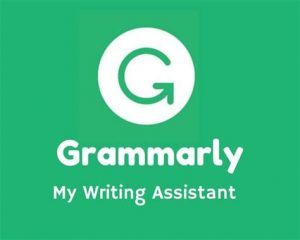Assessment and Evaluation Strategies for Measuring Student Learning – C921
Assessment and Evaluation Strategies for Measuring Student Learning – C921 Competencies:
7056.1.1: Assessment Theory and Methods – The graduate validates the application of theories, concepts, and principles used to assess, evaluate, and measure student learning in
various educational settings.
7056.1.2: Designing Assessments – The graduate proposes assessment strategies and implementation plans based on the principles of effective assessment design.

Assessment and Evaluation Strategies for Measuring Student Learning – C921
7056.1.3: Developing Assessments – The graduate develops formative and summative assessments useful for measuring the knowledge and skills applicable to nursing practice.
7056.1.4: Evaluating Assessment Effectiveness – The graduate evaluates the effectiveness of performance and objective assessments by analyzing student achievement
and learning outcomes data.
7056.1.5: Improving Assessments – The graduate creates an assessment improvement plan based on student outcome measures and assessment performance data.
Task 1: Developing Course Assessments
Introduction:
The work of a nurse educator does not end after teaching materials have been designed, developed, and delivered to students. In any learning environment, it is necessary to
evaluate the impact of those teaching materials on student learning. Assessment is the process of gathering data in order to evaluate and make decisions regarding student learning.
Assessment and Evaluation Strategies for Measuring Student Learning – C921
There are many approaches to measuring student acquisition of knowledge, skills, attitudes, and behaviors. A successful nurse educator will rely on the full breadth of evidence-based
assessment theories and strategies to design an assessment implementation plan that is most appropriate for their setting. After designing an assessment tool, nurse educators
must construct it using best practices to support reliability, validity, and fairness. Once designed and implemented, data gathered by the assessment must be analyzed using
rigorous methods to evaluate student performance. Finally, the results of this analysis must be used to continually improve both the assessment tool and the teaching materials.
Scenario:
You are the lead faculty in the Community Health Nursing Course for a prelicensure baccalaureate nursing (BSN) program. Your students represent varied experience, age
groups, and cultures reflective of their diverse community population.
Assessment and Evaluation Strategies for Measuring Student Learning – C921
The director of the nursing program has charged you with developing an eight-week course titled, “The Role of the BSN Nurse in Promoting Community Health.” The class meets for two hours weekly. The typical class size for the course is 40 students. In C919, you created a course outline that listed eight weekly course module topics. In C920, you created three of
the eight weekly course modules, including course objectives, student learning outcomes, and learning resources and activities.
In this task, you are creating a total of three assessments; one specific type of assessment for each of the modules you created in C920. For tone of the modules, you will develop a formative assessment intended to measure student progress and identify potential areas for improvement as the student progresses through the module.
For the second module, you will develop a summative performance assessment intended to measure student learning at the completion of the module. The f summative performance
assessment to measures students’ ability to apply skills or knowledge by creating an authentic product or completing a process.
For the third module, you will develop a summative objective assessment which also measures cumulative student learning and will consist of developing 10 objective test items.
Requirements:
Your submission must be your original work. No more than a combined total of 30% of the submission and no more than a 10% match to any one individual source can be directly
quoted or closely paraphrased from sources, even if cited correctly. Use the Unicheck Originality Report available in EMA as a guide for this measure of originality.
You must use the rubric to direct the creation of your submission because it provides detailed criteria that will be used to evaluate your work. Each requirement below may be
evaluated by more than one rubric aspect. The rubric aspect titles may contain hyperlinks to relevant portions of the course.
Assessment and Evaluation Strategies for Measuring Student Learning – C921
NOTE: Prompts A through D include the steps to create an assessment for the “Role of the BSN Nurse in Promoting Community Health” course. Each assessment must be based on the three modules that you developed in your C919 and C920 assessments: one assessment per module. Please note that certain prompts apply to only certain assessments
where explicitly stated.
A. Design an assessment blueprint for each of the three assessments by doing the following:
1. Develop an overview for each assessment, including the type, purpose, and expected outcomes of the assessment.
2. Include the module title, three course objectives, and two student learning outcomes (developed in your C920 assessment) for each assessment blueprint.
a. Describe how each assessment activity aligns with each course objective and student learning outcome in the module. Note to student: Before addressing A2a, please first complete the assessment activity required in section B (B2, B3, B4).
3. To identify the cognitive level, choose the Blooms’ taxonomy cognitive domain that correlates with the action verbs used in your course objectives.
4. Identify the allowable assessment item types for each assessment.
5. Identify the total number of items for each assessment, as applicable.
B. Develop the student-facing (what the student receives) assessment materials for each of the three assessments by doing the following:
1. Include the instructions for each assessment that provide sufficient information for the student to complete the assessment without further clarification or questions.
2. Develop a formative assessment activity to align with your formative assessment blueprint from part A. Please be sure to include all the details provided in the rubric.
a. Develop the feedback – explaining why a given response is correct or incorrect to correspond with different levels of performance. Goal setting language should prompt students to set their own goals for future learning.
3. Develop an authentic summative performance-based assessment task to align with your summative performance-based assessment blueprint from Prompt A. Be sure to
follow the rubric carefully and ensure that the assessment activity includes:
Background information (may include case study scenarios, simulations,
windshield surveys, etc.).
Prompts or questions that follow the background information that are
clearly written, contain one measurable verb, and have specificity and
detail.
Assessment and Evaluation Strategies for Measuring Student Learning – C921
a. Develop a rubric to evaluate student submissions for the summative
performance-based assessment.
Be sure that the number of prompts or questions identified in section B is
consistent with the number of criteria listed on your rubric.
Descriptors for each criterion should clearly differentiate among the varying
levels of performance.
4. Develop ten assessment items to align with your summative objective assessment
blueprint from part A. Be sure to include at least two different item types.
Be sure the question stem is written in a positive manner. For example,
avoid using words such as not and except.
Ensure that each question has one discrete answer or response.
Ensure that all test questions align with the module’s COs and SLOs.
4a. Include an answer key for all ten items.
C. Develop an implementation and evaluation plan for each of
the three assessments by doing the following:
1. Describe the step-by-step procedures for administering each assessment,
including each of the following:
• who will administer it
• when it will occur during the learning module
• duration of the assessment, and
• what resources will be required.
2. Describe how assessment results will be communicated to students for each assessment.
a. Describe the pass/fail criteria for each assessment, be sure to provide a logical
explanation of why pass/fail criteria may not be applicable for an assessment (i.e.,
formative assessment).

Assessment and Evaluation Strategies for Measuring Student Learning – C921
o For the summative assessments:
If you choose to use letter grades, be sure to demonstrate how the points
on the rubric align with the letter grade.
If you choose not to use points on your rubric, be sure to be clear on how
you would implement your pass/fail criteria, in terms of the number of revisions allowed on the assessment.
For the summative objective assessment, be sure to indicate the number of questions and points/percentages needed to pass the assessment.
3. Describe the analytical methods you will use to evaluate assessment performance
for each assessment. If an analytical method is not applicable for your particular
assessment, explain why.
a. Develop a specific plan of action to improve each assessment based on
assessment results. Please note the focus is on the assessment itself. Be sure to address both short-term and long-term improvements.
4. Describe the procedures that will ensure test security for each assessment. If not
applicable, explain why. Be sure to address prevention, detection, and responses to security
breaches.
D. Use the information in the three assessments you developed to complete the
following:
Note: A formal narrative paper in APA format will be submitted that includes parts
D1 through D5.
1. Describe an assessment theory (learning theory), concept, or principle that guided
your design choices for each assessment.
2. Describe a potential barrier to implementing each assessment in the online
environment and how your assessment design choices will minimize its impact.
Assessment and Evaluation Strategies for Measuring Student Learning – C921
3. Discuss the importance of authenticity in designing a performance-based assessment
task. Be sure your discussion includes a comparison of authentic and inauthentic
assessments.
4. Discuss potential contributing factors and ways to address each of the following
objective assessment outcomes:
• low test-level reliability
• low item discrimination
• low pass rates
Provide evidence-based support for specific actions to improve each of these
outcomes.
5. Discuss how the results of a performance-based assessment and objective assessment
can be used to improve teaching strategies and student learning.
E. Submit your formal narrative paper in APA style, including, but not limited to,
title page, headers, in-text citations, and references.
F. Demonstrate professional communication in the content and presentation of
your submission.
Related Posts:
- Professional Ethics ( MSN )
- E-learning tools and healthcare providers education
- Different Learning Styles
- Planning Learning Objectives
- The Collaborative Learning Community: EBP Identification of Clinical Question
- Developing an Advocacy Campaign
- Application of principles of leadership to promote high-quality healthcare in a variety of settings through the application of sound leadership principles
- The multidimensional roles of a contemporary academic nurse educator as a teacher, leader, change agent, and curriculum innovator.


